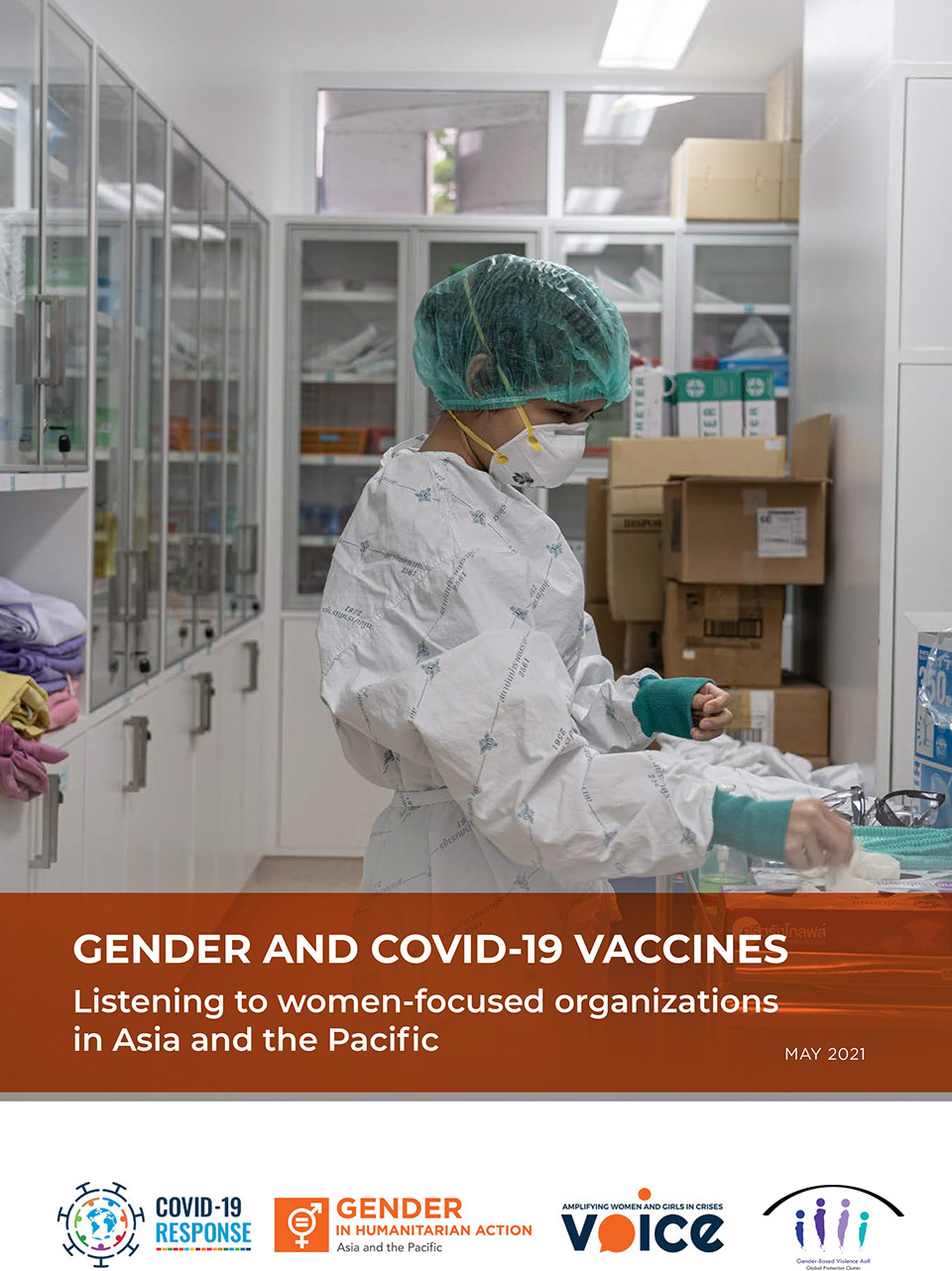
Gender and COVID-19 Vaccines: Listening to Women-Focused Organizations in Asia and the Pacific

Combatting the COVID-19 pandemic requires equitable distribution of safe and effective vaccines, however, women and girls are impacted by gaps both in the supply side and the demand side that hamper equitable distribution of the vaccine. Very few of the vaccines are going to those most vulnerable. The vaccine rollout in Asia and the Pacific has been relatively slow and staggered amid secondary waves of the virus.
As women and marginalized populations are often disproportionately affected by humanitarian emergencies, it is essential that national vaccination strategies and policies are inclusive and non-discriminatory with a tailored gender-responsive and intersection approach to ensure those who are most vulnerable are not left behind. To provide a comprehensive picture on emerging gendered barriers to COVID-19 vaccine uptake and supply, this report has been supplemented by analyses drawn from a virtual listening session with women-focused organizations (WFOs) on the COVID-19 vaccine rollout in Asia and the Pacific with representatives serving diverse women, youth and girls.
This report was produced by the Asia-Pacific Gender in Humanitarian Action Working Group (co-chaired by UN Women, CARE International and OCHA), Gender-Based Violence Area of Responsibility, and Voice. This work has been made possible by supplementary funding from the Government of Japan.